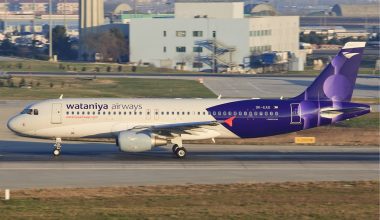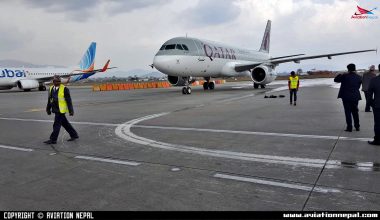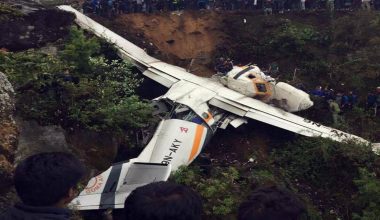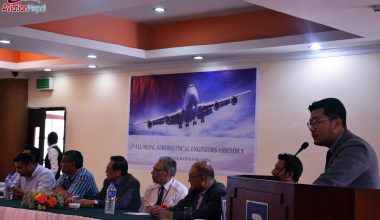Single Engine Airplane banned for Passenger Flights.
06 Apr 2016, Sumesh Shrestha – Single engine airplane of Nepal flying in the rural Karnali and Bajura regions from their hubs Nepalgunj and Surkhet have faced a permanent ban from Nepal Government being restricted to make any operation for the passenger flight or chartered passenger flights limiting their operations for cargo flying only. Ministry of Culture, Tourism and Civil Aviation imposed this ban under the instruction from the Council of Ministers of Nepal.
The Ministry has given continuity to the unexpected decision of Minister Aananda Prashad Pokhrel on March 6 to ban all the single engine passenger flights. Information revels that the Tourism minister was raised questions regarding the flying of passengers in single engine aircraft inside the council and he had no other option than banning it thereafter. The airline companies who went to consult with the Tourism Ministry Secretary Prem Kumar Rai were also informed that any passenger flights afterwards will not be allowed.
The companies have complained that lack of knowledge in authorities about the single engine aircrafts has created this trouble. The decision of banning the operation is not a decision of Government but an influence of someone personal, added the companies. Managing director of Goma Air, Manoj Karki also said that the kind of decision of Government clearly showed the lack of knowledge level in authorities. He added that there needs to be ban on single engine helicopters too in which Prime Minister and Highest Level Executives fly, if the ban is to be made on single engine aircrafts. A pilot said that single engine aircrafts are powered by turboprop engines which are highly reliable and comparatively good in terms of safety than the piston engine powered helicopters that are allowed to fly carrying passengers in Nepal.
Single Engine Airplane operating companies flew those airplane under the premises of permission they got from Approval Letter of Ministry and A.O.C. letter from Civil Aviation which clearly mentions the approval of doing Chartered and Cargo Flights. Only because of this approval they processed loan of Millions of Nepali Rupees from bank and let their aircrafts fly on the most rural places of Nepal, said Mr. Karki.
The ban will result 40% decrement in the income of the airlines. Single engine aircrafts fly up to 5 times in season from Nepalgunj to Simikot which takes around 50 minutes of time for each flight. An aircraft can make a transaction of 1 million Nepali Rupees per day during season. There is a minimum of 800 Million Nepali Rupees investment in the sector of Single engine operation including all three companies. These aircrafts could fly nine passengers for a fare of Rupees Sixteen Thousands Five Hundred two way per passenger in the sector of Simikot in Humla and Nepalgunj. A kilogram of cargo would cost Rupees One Hundred while flying from Surkhet to Humla and Rupees One Hundred and Ten while flying from Nepalgunj. It could carry 450 Kilograms of cargo in one operation.
At present 5 single engine aircrafts, 2 from Goma Air, 2 from Makalu Air and 1 from Air Kasthamandap are operating their commercial cargo and chartered flights from Surkhet and Nepalgunj to destinations like Humla, Dolpa, Jumla, Rara, Bajura. Civil Aviation has not permitted the scheduled flight and also the cargo/passenger flight in 1 operation in these aircraft. They used to carry cargo while flying from Terai, flew passengers while flying back to Terai and flew passengers the both way on chartered flights.
Following the crash of Air Kasthamandap’s Single-Engine airplane P-750 XSTOL with registration 9N-AJB on Feb 26, a contemporary ban was made on the registration and chartered operation of these 5 single engine aircrafts. A committee was formed under the joint secretary of Ministry to study the technical aspects of these aircrafts and assigned to submit their report within 15 days. The committee visited Surkhet, studied and presented their report to Tourism Minister Mr. Pokhrel on 24 March. But the report was silent on the topic of flying passengers in single engine aircrafts.
Single engine airplanes are considered to be the main means of transportation for passengers on countries of high hills like New Zealand and small islands Indonesia whose topography restricts the construction of large airports. These aircrafts can take off or land on grass airstrips and paved airstrips easily. In case of the engine failure the plane will not drop from sky but can glide for 4 kilometers for only 1000 feet of altitude from ground. More height from the ground will provide more time for the aircraft to glide and that crucial time can be utilized by pilots to make safe landing on an appropriate place.
Single engine aircrafts have served Nepali aviation since the early start of Aviation in Nepal carrying cargo and flying passengers. There are only 5 such aircrafts at present. They have already flown for 30 Thousands hours. Among the total 50 crashes in Nepalese Aviation history, 4 were single engine aircrafts which caused loss of 11 lives. The last crash of February 26 is only the incident relating engine failure in single engine aircraft.






